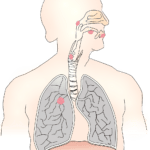
So, you’ve just completed your pulmonary rehab program, well done! But what happens next? Now that you’ve accomplished the goals you set for yourself during rehab, it’s important to have a clear understanding of what comes after. In this article, we will explore the next steps on your journey towards improved lung health. From ongoing exercise routines and maintenance plans, to incorporating healthy habits into your daily life, we’ll guide you through the post-rehab process and ensure you continue to thrive.
Importance of Maintenance
Continuing Exercise
After completing a pulmonary rehabilitation program, it is crucial to continue exercising regularly. Exercise plays a vital role in maintaining and improving lung function, as well as overall physical fitness. By incorporating exercises such as walking, swimming, or cycling into your daily routine, you can strengthen your respiratory muscles and enhance your lung capacity. Regular exercise also helps to improve cardiovascular health, boost energy levels, and reduce respiratory symptoms. It is important to consult with your healthcare provider or a pulmonary rehabilitation specialist to develop an exercise plan that suits your condition and goals.
Monitoring Progress
Monitoring your progress is essential to ensure that you maintain and continue to improve your lung function. Regular check-ups and lung function tests can help track changes in your respiratory health and identify any potential issues. These tests, such as spirometry, can measure your lung capacity and how well your lungs are functioning. By monitoring your progress, you can identify any changes or declines in your lung function and take appropriate actions to address them. It is essential to communicate with your healthcare provider about any concerns or changes you notice.
Preventing Relapse
To prevent a relapse in your respiratory condition, it is crucial to follow the strategies and techniques learned during pulmonary rehabilitation. This includes practicing good breathing techniques, managing symptoms, and avoiding triggers that may worsen your respiratory health. It is also important to stick to your prescribed medications and treatment plans. Regularly reviewing and updating your action plan with your healthcare provider can help you stay on track and prevent relapses. Remember that consistency and adherence to these strategies are key to maintaining your respiratory health and preventing setbacks.
Transitioning to Home
Follow-up Care
After completing a pulmonary rehabilitation program, it is essential to continue receiving regular follow-up care from your healthcare provider. These follow-up appointments allow for ongoing monitoring of your respiratory health and provide an opportunity for any necessary adjustments to your treatment plan. Your healthcare provider can assess your progress, provide guidance on managing symptoms, and address any concerns you may have. By maintaining regular follow-up care, you can ensure that your respiratory health remains a priority and receive the necessary support for long-term management of your condition.
Medication Management
Proper management of medications is crucial for maintaining optimal respiratory health. It is important to take medications as prescribed by your healthcare provider and to adhere to the recommended dosage and frequency. Some medications may need to be adjusted or changed over time, so it is essential to communicate any changes in symptoms or side effects to your healthcare provider. Additionally, it is important to understand the purpose and potential side effects of your medications, as well as any drug interactions. Proper medication management is essential in controlling symptoms, preventing exacerbations, and maintaining overall respiratory well-being.
Home Exercises
Continuing home exercises is an integral part of maintaining the benefits gained from pulmonary rehabilitation. Your healthcare provider or pulmonary rehabilitation specialist can provide you with a personalized home exercise program based on your specific needs and abilities. These exercises are designed to improve lung function, strengthen respiratory muscles, and enhance overall physical fitness. Regularly engaging in these exercises can help maintain the progress achieved during pulmonary rehabilitation and contribute to better respiratory health. It is important to follow the prescribed exercises and seek guidance from your healthcare provider if needed.

Managing Symptoms
Breathing Techniques
Proper breathing techniques can help manage respiratory symptoms and improve lung function. Techniques such as diaphragmatic breathing, pursed-lip breathing, and controlled deep breathing can assist in reducing shortness of breath, enhancing oxygen exchange, and promoting relaxation. These techniques can be practiced throughout the day, especially during activities that may trigger respiratory symptoms. It is beneficial to work with a respiratory therapist or attend breathing technique classes to learn and refine these techniques. Incorporating these techniques into your daily routine can offer significant relief and improve your overall respiratory well-being.
Daily Living Modifications
Making certain modifications to your daily living habits can help manage respiratory symptoms and improve your quality of life. Simple changes such as avoiding exposure to environmental pollutants, maintaining clean indoor air quality, and practicing good hygiene can contribute to better respiratory health. Additionally, pacing yourself during daily activities, taking breaks when needed, and using assistive devices for energy conservation can help manage fatigue and reduce the risk of exacerbations. By making these modifications, you can better manage your symptoms and maintain a healthier lifestyle.
Managing Anxiety
Living with a respiratory condition can often lead to feelings of anxiety and stress. It is important to find effective ways to manage these emotional challenges to maintain your well-being. Techniques such as relaxation exercises, mindfulness meditation, and engaging in activities that bring you joy and relaxation can help reduce anxiety and improve your mental health. Seeking support from mental health professionals, joining support groups, or participating in counseling can also provide valuable guidance and understanding. By managing anxiety, you can better cope with your respiratory condition and improve your overall quality of life.
Support Networks
Joining Support Groups
Joining a support group can provide invaluable emotional support and encouragement for individuals living with a respiratory condition. Support groups offer a safe and understanding environment where you can share experiences, exchange information, and learn from others facing similar challenges. Meeting individuals who understand your struggles can help alleviate feelings of isolation and provide a sense of community. Support groups may be available through hospitals, community centers, or online platforms. By joining a support group, you can gain a support network that understands and empathizes with your journey.
Seeking Emotional Support
In addition to support groups, seeking emotional support from friends, family, and loved ones plays a vital role in managing a respiratory condition. Openly communicating with your loved ones about your condition, needs, and feelings can help foster understanding, empathy, and support. Having someone to share your experiences, concerns, and successes with can significantly improve your emotional well-being. Your loved ones can be an invaluable source of encouragement, motivation, and reassurance during your journey. Remember to reach out to them when needed and lean on their support.
Online Resources
The internet offers a vast array of resources and information for individuals managing a respiratory condition. Online platforms, websites, and forums dedicated to respiratory health can provide valuable educational materials, expert advice, and peer support. It is important to rely on reputable sources, such as respected medical institutions and organizations, for accurate and up-to-date information. Online resources can be particularly beneficial for finding tips, strategies, and inspiration from individuals who have successfully managed their respiratory conditions. Engaging with online communities can also offer a sense of connection and support during your journey.

Nutrition and Diet
Healthy Eating Habits
Maintaining a healthy diet is essential for optimal respiratory health. Eating a balanced diet that includes a variety of fruits, vegetables, whole grains, lean proteins, and healthy fats provides essential nutrients that support lung function and overall well-being. Incorporating foods rich in antioxidants, such as berries, leafy greens, and citrus fruits, can help reduce inflammation and protect lung tissues from damage. Avoiding or limiting processed foods, sugary beverages, and foods high in saturated fats can contribute to better respiratory health. It is important to consult with a registered dietitian or nutritionist to develop a personalized eating plan that suits your specific needs and dietary restrictions.
Importance of Hydration
Staying hydrated is crucial for maintaining optimal respiratory health. Drinking an adequate amount of water helps thin mucus secretions, making it easier to clear the airways and reduce the risk of respiratory infections. Proper hydration also supports overall bodily functions, such as maintaining blood volume and transporting nutrients. It is important to drink at least 8 glasses (64 ounces) of water per day, or more if recommended by your healthcare provider. Additionally, it is crucial to limit or avoid caffeinated and alcoholic beverages, as they can contribute to dehydration. Developing a habit of drinking water throughout the day can help ensure proper hydration.
Managing Weight
Maintaining a healthy weight is important for managing respiratory conditions. Excess weight can restrict the movement of the diaphragm and chest wall, limiting lung expansion and compromising respiratory function. Losing weight, if necessary, can help alleviate symptoms such as shortness of breath and improve overall respiratory health. A registered dietitian or nutritionist can help develop a weight management plan tailored to your specific needs and goals. Incorporating regular exercise, practicing portion control, and making healthy food choices are important components of managing weight and maintaining optimal respiratory health.
Monitoring Lung Function
Regular Lung Function Tests
Regular lung function tests are essential for monitoring and assessing your respiratory health. These tests, such as spirometry, measure lung capacity, airflow, and the effectiveness of respiratory muscles. By monitoring changes in lung function over time, your healthcare provider can evaluate the progression of your respiratory condition and determine the effectiveness of your treatment plan. It is important to attend scheduled lung function tests as recommended by your healthcare provider and communicate any changes or concerns in respiratory symptoms. Regular monitoring of lung function allows for early detection of any decline or progression of respiratory conditions, enabling timely interventions.
Peak Flow Monitoring
Peak flow monitoring is a simple and effective way to measure your lung function at home. It involves using a peak flow meter to measure the maximum airflow you can generate when you exhale forcefully. Regularly monitoring your peak flow readings can help you identify changes in your respiratory health and detect early signs of exacerbations. Your healthcare provider can provide you with a personal best peak flow value and a peak flow action plan to guide you in interpreting and responding to changes in your peak flow readings. By regularly monitoring your peak flow, you can take proactive steps to manage your respiratory condition and prevent worsening symptoms.
Pulse Oximetry
Pulse oximetry is a non-invasive method used to measure the oxygen saturation level in your blood. It involves using a small device called a pulse oximeter, which is clipped onto your finger. Regular monitoring of your oxygen saturation levels can provide insight into your respiratory well-being and help detect any abnormalities or changes in oxygen levels. Your healthcare provider may recommend periodic or continuous use of a pulse oximeter, especially during physical activity or overnight sleep, to assess your oxygen levels. Monitoring your oxygen saturation levels can assist in managing your respiratory condition and determining the need for supplemental oxygen therapy, if necessary.
Identifying Warning Signs
Recognizing Symptoms of Exacerbation
Recognizing the warning signs of an exacerbation is crucial for managing a respiratory condition. Common symptoms include increased shortness of breath, wheezing, chest tightness, coughing, increased sputum production, and changes in the color or consistency of sputum. It is important to pay attention to your body and be aware of changes or unusual symptoms. Developing a symptom diary where you can track and record changes in your symptoms can be helpful for identifying patterns and alerting your healthcare provider. Promptly recognizing and addressing exacerbation symptoms can help prevent further deterioration and minimize the impact on your respiratory health.
Knowing When to Seek Medical Help
Knowing when to seek medical help is essential for managing a respiratory condition. If you experience severe shortness of breath, chest pain, confusion, bluish lips or nails, or a sudden worsening of symptoms, it is important to seek immediate medical attention. Additionally, if your usual symptom management strategies and medications are not providing relief, it is crucial to consult with your healthcare provider. They can assess your condition, adjust your treatment plan if necessary, or provide additional interventions to stabilize your respiratory health. It is better to seek prompt medical help to prevent serious complications or exacerbations.
Developing an Action Plan
Developing an action plan in collaboration with your healthcare provider is an important step in managing a respiratory condition. An action plan outlines specific steps and strategies to follow when symptoms worsen or exacerbations occur. It includes clear instructions on medications, adjustments to treatment plans, emergency contacts, and when to seek medical help. By having a personalized action plan in place, you are better prepared to respond to changes in your respiratory health and take appropriate actions. Regularly reviewing and updating your action plan with your healthcare provider ensures it remains relevant and effective for your specific needs.
Long-Term Lifestyle Changes
Quitting Smoking
If you are a smoker, quitting smoking is one of the most significant long-term lifestyle changes you can make to improve your respiratory health. Smoking damages the lungs, increases the risk of respiratory infections, and worsens respiratory symptoms. By quitting smoking, you can support your lung function, reduce respiratory symptoms, and minimize the risk of respiratory complications. There are various smoking cessation resources available, such as counseling programs, nicotine replacement therapy, and medications, which can greatly assist in the quitting process. It is important to seek support from healthcare professionals and loved ones to successfully quit smoking and prioritize your respiratory health.
Avoiding Environmental Triggers
Identifying and avoiding environmental triggers that may worsen your respiratory symptoms is crucial for long-term management of a respiratory condition. Common triggers include exposure to air pollutants, allergens, secondhand smoke, strong odors, and respiratory infections. By minimizing exposure to these triggers, you can reduce the risk of exacerbations and maintain better respiratory health. Taking proactive steps such as using air purifiers, avoiding outdoor activities during high-pollution days, practicing good hand hygiene, and staying updated on vaccinations can significantly minimize the impact of environmental triggers on your respiratory condition.
Prioritizing Self-Care
Prioritizing self-care is essential for maintaining optimal respiratory health and overall well-being. Self-care encompasses activities and practices that promote physical, mental, and emotional well-being. It includes elements such as getting enough restful sleep, practicing stress management techniques, maintaining a balanced diet, engaging in regular exercise, and engaging in activities that bring you joy and relaxation. Taking time for yourself and incorporating self-care practices into your routine contribute to better respiratory health by reducing stress levels, improving immune function, and enhancing overall quality of life. Remember, self-care is not a luxury but a necessity for managing a respiratory condition.
Ongoing Rehabilitation Options
Maintenance Programs
Participating in ongoing maintenance programs is an excellent way to continue the benefits gained from pulmonary rehabilitation. Maintenance programs typically involve supervised exercise sessions, education, and support to maintain and enhance lung function. These programs are designed to provide ongoing guidance, motivation, and social support for individuals with respiratory conditions. By joining a maintenance program, you can engage in regular exercises under the supervision of healthcare professionals, receive updated education on managing your condition, and connect with others who share similar experiences. Maintenance programs are often offered by hospitals, rehabilitation centers, and community organizations.
Telemedicine and Remote Monitoring
Telemedicine and remote monitoring have revolutionized the way healthcare is delivered, particularly in the management of chronic conditions. These technologies allow you to connect with healthcare professionals remotely, eliminating the need for in-person visits for routine check-ups or follow-up care. Through telemedicine, you can have virtual consultations with your healthcare provider, access educational resources, and receive guidance on managing symptoms or treatment plans. Remote monitoring devices, such as wearable technology or home spirometers, can enable healthcare providers to remotely track your lung function and respiratory health. By incorporating telemedicine and remote monitoring into your ongoing rehabilitation, you can receive timely care and support from the comfort of your home.
Home-Based Rehab
For individuals who prefer the convenience and flexibility of home-based rehabilitation, home exercise programs can be highly beneficial. These programs are designed by healthcare professionals to suit your specific needs and can include exercises that focus on lung capacity, respiratory muscle strength, and overall fitness. Home-based rehab programs typically involve regular check-ins, monitoring of progress, and adjustments to the exercise plan as needed. By engaging in home-based rehab, you can continue to improve lung function, strengthen respiratory muscles, and maintain the benefits gained from pulmonary rehabilitation, all within the comfort of your own home.
The Role of Healthcare Providers
Regular Check-Ups
Regular check-ups with your healthcare provider are essential for ongoing management of a respiratory condition. These appointments allow for continuous monitoring of your respiratory health, adjustment of treatment plans if necessary, and addressing any concerns or questions you may have. During these check-ups, your healthcare provider can perform lung function tests, assess your symptoms, and provide guidance on managing your condition. It is important to attend scheduled check-ups and communicate any changes in your respiratory health, adherence to treatment plans, or concerns about medications. By actively participating in regular check-ups, you can optimize your respiratory health and benefit from ongoing care and support.
Coordination of Care
Coordination of care is a critical aspect of managing a respiratory condition, particularly for individuals who may require multiple healthcare providers or specialists. Your primary healthcare provider acts as the central coordinator, ensuring that all aspects of your care are seamlessly integrated and communicated among the different healthcare professionals involved. This coordination of care includes sharing medical records, test results, treatment plans, and collaborating on ongoing management strategies. By having a coordinated care team, you can ensure that you receive comprehensive and cohesive care that addresses your specific respiratory needs and goals.
Addressing Health Concerns
Part of the role of healthcare providers is to address any health concerns or questions you may have regarding your respiratory condition. It is important to feel comfortable communicating openly with your healthcare provider and seeking clarification on any aspects of your care. Whether it is discussing changes in symptoms, potential side effects of medications, or exploring alternative treatment options, your healthcare provider is there to guide and support you. Remember to advocate for yourself and actively engage in conversations about your respiratory health. Addressing your health concerns promptly can lead to better understanding, management, and outcomes for your respiratory condition.









